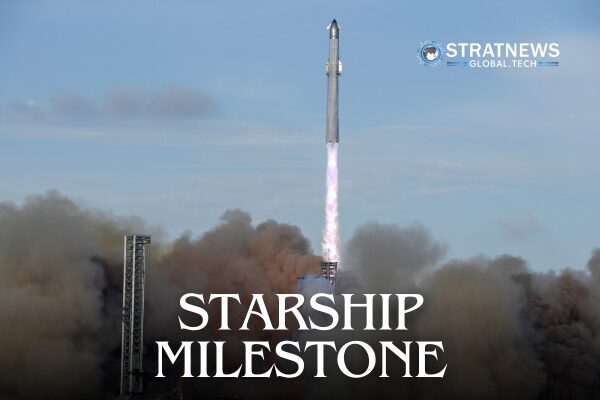SpaceX Starship Test Marks Key Progress with Satellite Deployment and Heat Shield Trial
SpaceX achieved major milestones on Tuesday as its Starship rocket successfully deployed a batch of mock Starlink satellites and tested advanced heat shield tiles during re-entry. This progress marks a turning point for the company following a series of earlier test failures.
Starship Launches and Completes Major Objectives
The Starship system, standing 403 feet tall, launched at 7:30 p.m. EDT (2330 GMT) from SpaceX’s Starbase in south Texas. Just three minutes into the flight, the Super Heavy booster released the Starship upper stage into space.
Roughly 30 minutes after lift-off, Starship activated a new satellite deployment mechanism. The system, likened to a “Pez” dispenser, successfully released eight dummy Starlink satellites into orbit. This test plays a crucial role in the future of SpaceX’s satellite internet business, which has so far relied on the Falcon 9 rocket for launches.
Heat Shield Put to the Test During Re-entry
Approximately one hour into the mission, Starship began its re-entry over the Indian Ocean. The trial focused on a set of new hexagonal heat shield tiles, designed to withstand extreme atmospheric friction without requiring significant refurbishment after each flight.
Traditionally, spacecraft returning to Earth need extensive repairs or new heat shields due to the harsh conditions of re-entry. While NASA’s retired Space Shuttle tiles supported multiple flights, many still needed replacement. SpaceX aims to improve on this by creating a durable, reusable shield.
Elon Musk, speaking during a SpaceX live stream, called the reusable heat shield the “single biggest” engineering challenge ahead.
Controlled Landing Followed by Planned Explosion
The mission concluded with Starship performing a controlled vertical landing on the ocean’s surface west of Australia. Although it landed successfully, the 171-foot Starship later toppled and exploded, likely due to its built-in flight termination system. This outcome was anticipated.
Despite this dramatic end, the test flight marked clear progress. It was the tenth test in Starship’s development and showed significant improvement after earlier failures.
Path Forward for NASA Missions and Starlink Expansion
NASA has chosen Starship for its Artemis III mission, which will return astronauts to the Moon. Acting NASA Administrator Sean Duffy congratulated SpaceX, stating that the flight “paves the way” for future missions. Although Artemis III is scheduled for 2027, experts believe delays are likely.
Before Starship can carry humans, it must complete several more complex tasks. These include demonstrating in-space refuelling and achieving safe landings on the Moon’s uneven surface.
Meanwhile, SpaceX continues to expand Starbase, its vast rocket production site in Texas. The area was recently designated a municipality, supported by many SpaceX workers who live and work there.
Starship is central to the future of SpaceX’s Starlink business, which aims to use the rocket to launch larger satellite batches. For now, Falcon 9 remains the main vehicle, but Starship’s success could change that.
On Tuesday, the Super Heavy booster did not attempt a catch by launch tower arms. Instead, it performed a water landing in the Gulf of Mexico to test a new engine configuration for future recovery attempts.
with inputs from Reuters


